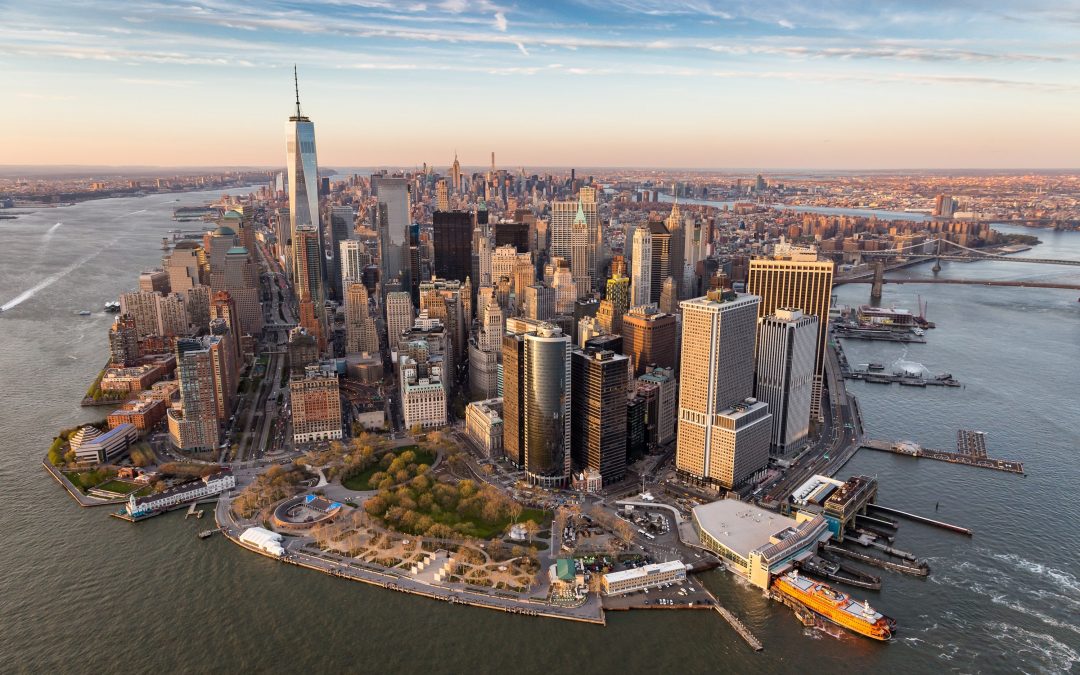Although New York City is always changing, it’s hard to imagine to imagine it as anything other than what it is. But change is part of New York’s identity. It is manifest in the crowds of people swept up and spilled out of the island metropolis. Even evidence of New York’s history–in the recreated apartments of the Tenement Museum, for example, and the old City Hall subway station–still feel folded up in this vision. New York has endless layers: you can ascend seventy floors in an elevator to get to your office or descend four stories on the escalator to ride the subway.
To imagine another New York–a different New York, rather than one that has previously existed or secretly exists–is a different matter. It rings of an alternate timeline, so anchored is this city’s iconic skyline in its urban identity. Sam Lubell and Greg Goldin have documented just that, though, in their book Never Built New York. By canvassing architectural firms and archives when available, the authors have unearthed designs and plans for a New York that might have been. Not only could these designs have become a reality, but they might have taken the place of other now iconic architecture in the city.
Some projects were closer to inception than others, but many would have radically altered the cityscape. A gigantic dome over Midtown and a floating airport on the Hudson seem some of the more far-fetched ideas, as does an ambitious extension of downtown Manhattan into New York Bay. As the authors point out, however, these ideas may not have seemed so extreme when first proposed. “’It was a time when people really believed in the power of technology,” Lubell says. ‘And they thought, you know, we can do kind of anything. … We’re building spaceships that go to the moon, why can’t we build a dome over Manhattan to get rid of all this pollution, get rid of all the problems of weather?’”
That’s all well and good, but what about Frank Lloyd Wright’s proposal to transform Ellis Island into a bubble city? And his plan might have been preferable to the immediate alternatives: a prison or a resort. Ellis Island wasn’t in use for long after WWII, so it makes sense the city would want to develop it. No landmark is sacred, as proved by the demolished old Penn Station. And Grand Central Station isn’t still standing for lack of trying.
Many city landmarks might have looked very different if, for example, City Hall had been rebuilt as a “neo-Egyptian pile” in the style of Scottish architect George Ashdown Audsley around the turn of the turn of the twentieth century. And the Federal Reserve Bank could have been made of glass and elevated many stories above the ground via steel columns! Speaking of columns, residential towers were once considered for use as supports of bridges spanning city rivers.
Although some of the designs may sound impossible, some would have undoubtedly complemented the city, like Edward Larrabee Barnes’s 1974 biosphere. Some might have improved the skyline, like a Columbus Circle building for ABC designed in 1963 to take the shape of a flower. There’s also the proposed 2004 Olympic Village, situated on the now booming Queens waterfront…
To help New Yorkers and visitors imagine a Big Apple that might have been, the authors are working with the Queens Museum to reconstruct atop the museum’s existing model of the city. The exhibit will open later in 2017.
Featured image: American Weekly via pri.org

